
Falling spreads on earnings before interest taxes depreciation and amortization (Ebitda) will weigh on steel sector CAPEX, the report said, adding that the industry is yet to see a recovery in prices despite a run-up in raw material costs.
"Global steel prices dropped 13 percent in the first eight months of 2019 due to weak demand, unseasonal jump in global inventory levels of up to nearly 35 percent through August and trade tensions," the report said. This was despite a whopping 56 percent runup in global iron ore prices during the same period.
"Steel prices in India mirrored the trend, falling 10 percent from ₹42,000 per ton in January to ₹38,000 per ton in August 2019," the report added.
Not surprisingly, Indian steel manufacturers’ earnings before interest, tax, depreciation, and amortization (Ebitda) spreads contracted 420 basis points (bps) on-year in the first quarter of fiscal 2020. The contraction was more for large nonintegrated players, at 470 bps.
To add to it, "subdued domestic demand and weak export markets cloud the industry’s prospects in the rest of this fiscal as well," the Crisil report said. After a robust 7.5-8 per cent growth in the previous two fiscals, the domestic steel industry is expected to witness a mid-cycle slowdown at 4-5 per cent this fiscal, given muted construction investments and weak automotive market, the report predicted.
CRISIL Research said: “Steel prices have not been able to recover despite a cost-push. We, therefore, believe weak realizations will shear 350-370 bps off the sector’s Ebitda margins for the first half and 200-250 bps for the fiscal as a whole, reversing a three-year climb."
"Large non-integrated players will see their margins shrink more, by 300-350 bps this fiscal, given weak flat steel market and a 3-5 per cent rise in iron ore prices amidst weak realizations.”
Esta historia es de la edición October 2019 de Steel Insights.
Comience su prueba gratuita de Magzter GOLD de 7 días para acceder a miles de historias premium seleccionadas y a más de 9,000 revistas y periódicos.
Ya eres suscriptor ? Conectar
Esta historia es de la edición October 2019 de Steel Insights.
Comience su prueba gratuita de Magzter GOLD de 7 días para acceder a miles de historias premium seleccionadas y a más de 9,000 revistas y periódicos.
Ya eres suscriptor? Conectar

Steel's Net Zero mission
The country’s commitment to achieving Net Zero within a targeted timeframe will now propel its steel sector towards a sustainable future in line with global trends.
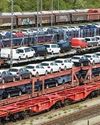
Fuel Price Hike, Supply Chain Disruption Hurt Festive Sales
Supply chain disruptions and fuel price hikes have hurt festive sales in a big way as most auto majors posted decline in sales in October.
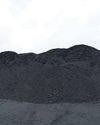
Seaborne coking coal offers remain range-bound
Seaborne coking coal offers moved in a narrow range in October amid global supply tightness and healthy spot demand.

Global crude steel output down 8% in September
China manufactured 74 mt in September, fall of 21% y-o-y while India’s production went up by 7% to 10 mt.
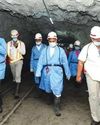
MOIL embarks on expansion projects
“Even though our country is blessed with manganese ore reserves, we import 50% of the domestic requirement. We have to lower our import dependence and save precious foreign exchange.” Ram Chandra Prasad Singh, Steel Minister

Iron ore handled by major ports down 17% in H1
The 12 major Indian ports handled 27 mt of iron-ore during H1 of 2021, down by 17% from 33 mt recorded for the corresponding period of previous year.
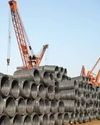
Shrinking China output to boost India exports
“In the third quarter of 2021, the company actively responded to the pressure from external policies, such as production curtailment and dual control system on energy consumption and intensity, as well as coal resource shortage and surging prices.” Baoshan Iron and Steel Co Ltd

Indian Railways' iron-ore handling up 25% in H1
Indian Railways in April-September of 2021 (H1) transported 84 mt of iron ore, up by 25% over 67 mt during April-September 2020.
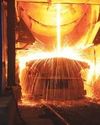
September crude steel production up 7.2% y-o-y
India’s crude steel production in September 2021 grew 7.2 percent to 9.547 million tons (mt) over September 2020 but was down by 3.2 percent from August 2021 output, provisional steel ministry data showed.

“Five enablers: way forward to sustainable cleaner steel”
Right and scalable technology, appropriate policy guidance by government, access to finance to fund transition, willingness of customers to pay for cleaner products and infrastructure for use of new technologies are the need of the hour for the sustainable and cleaner steel industry, according to Madhulika Sharma, Chief Corporate Sustainability, Tata Steel.